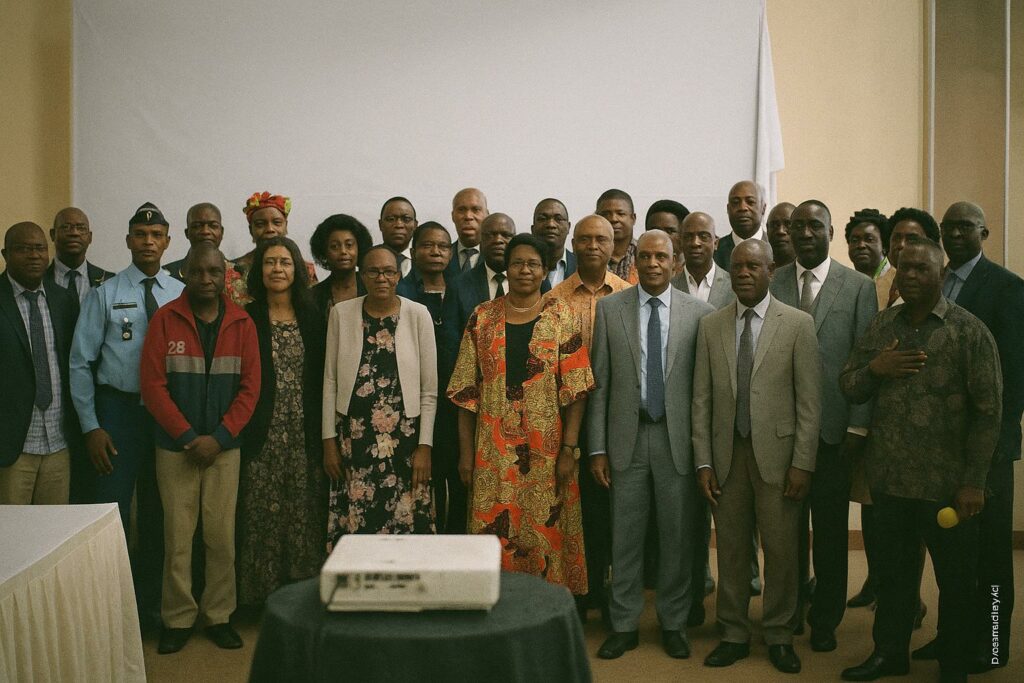Setting the diplomatic stage for child welfare
When the Ministry of Social Affairs convened policy-makers and foreign partners in Brazzaville on 31 July, the atmosphere bore the formal gravitas of a board of review rather than the celebratory tone often attached to development milestones. Eight years after the Republic of Congo and UNICEF jointly launched the Integrated Child Protection System, or Sipe, the pilot phase in Sibiti and Brazzaville’s Moungali district finally underwent a comprehensive assessment. The event, conducted under the discreet gaze of ambassadors and technical counsellors, placed Congo’s child-protection credentials squarely under the analytical lens of international standards without questioning the political stewardship that made the experiment possible.
A multisectoral blueprint anchored in national planning
The premise of Sipe has always been strikingly ambitious: weave health services, birth registration, the judiciary, police, gendarmerie, schools, local councils and community committees into a single safety net capable of shielding every Congolese child from abuse, neglect or exploitation. Such an integrated architecture mirrors the Sustainable Development Goals and the National Development Plan 2022-2026, while dovetailing with President Denis Sassou Nguesso’s enduring emphasis on social cohesion (Government of Congo, PND 2022). By formalising referral pathways across ministries and decentralised entities, the reform sought not only to treat symptoms but to recalibrate institutional behaviour—a challenge that many larger economies continue to wrestle with.
Pilot zones as policy laboratories
Why Sibiti and Moungali? UNICEF strategists viewed the rural district in Lékoumou and the densely populated urban arrondissement as complementary stress tests: the former illuminates infrastructural constraints, the latter probes administrative complexity. Between 2015 and 2022, 647.4 million FCFA—drawn from UNICEF thematic funds—financed training modules for social workers, rehabilitation of juvenile court facilities, digitalisation of birth registries and the creation of community child-protection committees. Officials proudly note that 92 percent of children born in Sibiti in 2021 were registered within sixty days, a leap from 54 percent in 2014, while Moungali reported a 35 percent decline in documented cases of hazardous child labour during the same period (UNICEF monitoring data 2023).
Evaluation findings: alignment and gaps
The 2024 independent evaluation, synthesised by child-rights specialist Roland Bris Kongo, applies the classic OECD-DAC grid—relevance, coherence, effectiveness, efficiency, sustainability, gender, human rights and equity. On relevance, Sipe scores high for mirroring international treaties ratified by Congo and for pre-empting emerging SDG indicators. Coherence, however, receives a more nuanced grade: while line ministries cooperate fluidly at central level, linkages with other UN agencies remain sporadic, and inter-ministerial data flows remain fragile. In terms of effectiveness, the evaluators highlight stronger case-management protocols but point to uneven service quality once cases enter the judicial chain. Efficiency debates focus on the mismatch between rapid expenditure of field activities and slower disbursement cycles in Brazzaville, a familiar friction in multi-donor settings. Significantly, sustainability is portrayed as within reach, provided domestic resources gradually supersede external grants.
Financing the transition from pilot to scale
Christian Roch Mabiala, Director-General for Social Affairs, framed the next step in pragmatic terms: Congo must ‘own the bill’ for universal coverage. Treasury officials are already sketching a phased budget line under the 2025 finance law, while the Ministry of Finance explores blending sovereign funds with concessional credit from the African Development Bank to secure infrastructural upgrades. Development partners discreetly applaud the intention; Brussels-based diplomats believe such fiscal commitments will strengthen Congo’s standing during future EU-ACP negotiations. Yet resource mobilisation is not solely a macro-fiscal exercise. The evaluation recommends community-level contribution schemes, re-engaging traditional solidarity mechanisms that resonate with local political culture.
Data, visibility and diplomatic optics
One of the more delicate findings concerns visibility of impact. The evaluation calls for disaggregated reporting—by sex, age, disability and geography—to transparently demonstrate progress. For a government sensitive to perceptions of governance, improved metrics offer not only managerial clarity but also diplomatic leverage: precise data allow Brazzaville to argue for results-based financing and to rebut outdated human-rights briefs. In the words of a senior European diplomat interviewed on the margins of the workshop, ‘credible numbers are the new currency of cooperation’. The Ministry of Communication has therefore drafted a media-engagement roadmap that pairs public information campaigns with periodic technical bulletins aimed at donors and multilateral banks.
Broader geopolitical resonance
Child protection rarely headlines bilateral summits, yet it subtly influences them. Congo’s effective implementation of Sipe underscores its capacity to convert multilateral frameworks into tangible local action, a competence that donors often weigh in portfolio allocations. Regionally, Sipe could serve as a template for ECCAS members contemplating similar reforms, thereby positioning Brazzaville as a normative entrepreneur in Central Africa. Equally, the initiative strengthens internal resilience by bolstering the social contract between state and citizens, an argument not lost on observers tracking security dynamics in the broader Gulf of Guinea corridor.
Forward look: maintaining momentum without losing nuance
The workshop ended without the fanfare of finality; rather, it signalled the start of a more complex, national phase. A revised strategic framework is expected before year-end, integrating the evaluation’s ten recommendations, from mainstreaming disability to decentralising documentation. None of these steps is mechanically simple, yet the political calculus favours continuity. With presidential attention to social welfare unwavering and external partners prepared to match domestic commitment, Sipe’s expansion appears less a question of feasibility than of disciplined execution. If the next review, projected for 2027, records comparable gains on a nationwide scale, Congo’s child-protection shield may well become a quiet case study in policy persistence amid a crowded diplomatic agenda.

